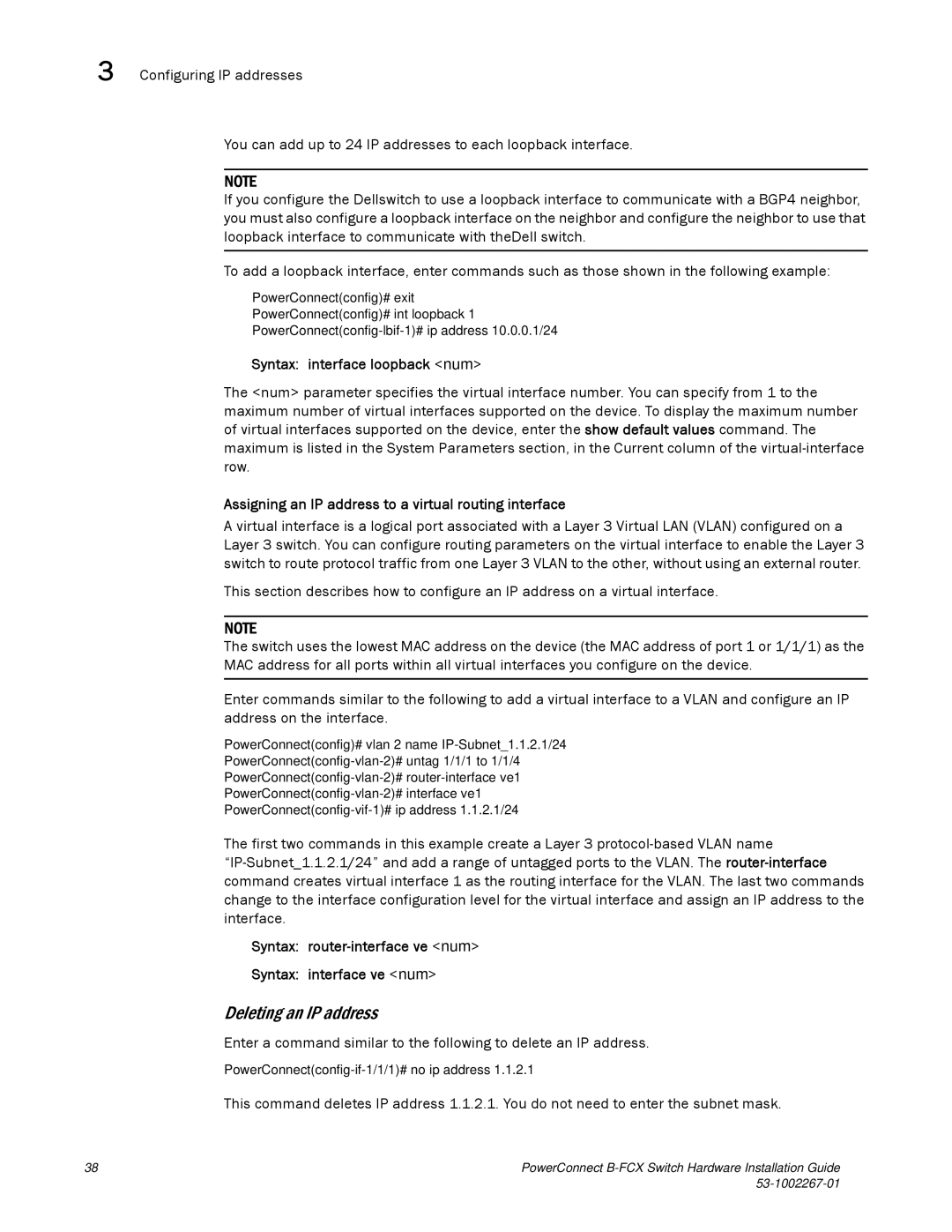
3 Configuring IP addresses
You can add up to 24 IP addresses to each loopback interface.
NOTE
If you configure the Dellswitch to use a loopback interface to communicate with a BGP4 neighbor, you must also configure a loopback interface on the neighbor and configure the neighbor to use that loopback interface to communicate with theDell switch.
To add a loopback interface, enter commands such as those shown in the following example:
PowerConnect(config)# exit
PowerConnect(config)# int loopback 1
Syntax: interface loopback <num>
The <num> parameter specifies the virtual interface number. You can specify from 1 to the maximum number of virtual interfaces supported on the device. To display the maximum number of virtual interfaces supported on the device, enter the show default values command. The maximum is listed in the System Parameters section, in the Current column of the
Assigning an IP address to a virtual routing interface
A virtual interface is a logical port associated with a Layer 3 Virtual LAN (VLAN) configured on a Layer 3 switch. You can configure routing parameters on the virtual interface to enable the Layer 3 switch to route protocol traffic from one Layer 3 VLAN to the other, without using an external router.
This section describes how to configure an IP address on a virtual interface.
NOTE
The switch uses the lowest MAC address on the device (the MAC address of port 1 or 1/1/1) as the MAC address for all ports within all virtual interfaces you configure on the device.
Enter commands similar to the following to add a virtual interface to a VLAN and configure an IP address on the interface.
PowerConnect(config)# vlan 2 name
The first two commands in this example create a Layer 3
Syntax: router-interface ve <num>
Syntax: interface ve <num>
Deleting an IP address
Enter a command similar to the following to delete an IP address.
This command deletes IP address 1.1.2.1. You do not need to enter the subnet mask.
38 | PowerConnect |
|
